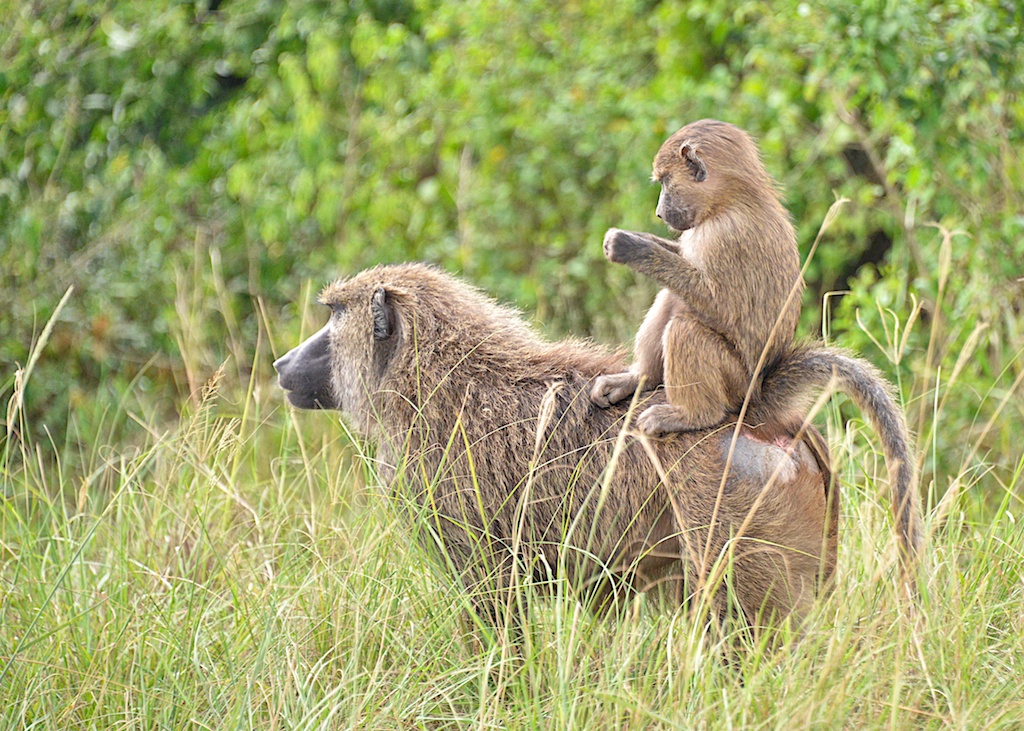- Kampala, Uganda
- +256-780-566-847 | broadbillsafaris@gmail.com
The park is situated in the Northwestern region of Uganda bordered by the districts of Buliisa, Nwoya, Kiryandongo and Masindi. The park is the largest in Uganda covering total land area of 3,840 km2. Murchison Falls became one of Uganda’s first national parks in 1952. Murchison Falls National Park lies at the northern end of the Albertine Rift Valley, where the sweeping Bunyoro escarpment tumbles into vast, palm-dotted savanna. First gazetted as a game reserve in 1926, it is Uganda’s largest and oldest conservation area. At Murchison Falls, the Nile squeezes through an 8m wide gorge and plunges with a thunderous roar into the “Devil’s Cauldron”, creating a trademark rainbow. Murchison Falls is notably blessed with over 144 mammals, 556 bird species, 51 reptiles, and 51 Amphibians. With a great number of African elephants, Murchison falls is impressive all year round. Historically Giraffes exclusively inhabit the northern sector of the park. Buffalo populations have spiked to over 10,000 while Uganda Kobs have leaped to more than 35,000. The northern section of the park contains savanna and Borassus palms, acacia trees, and riverine woodland. The south is dominated by woodland and forest patches.
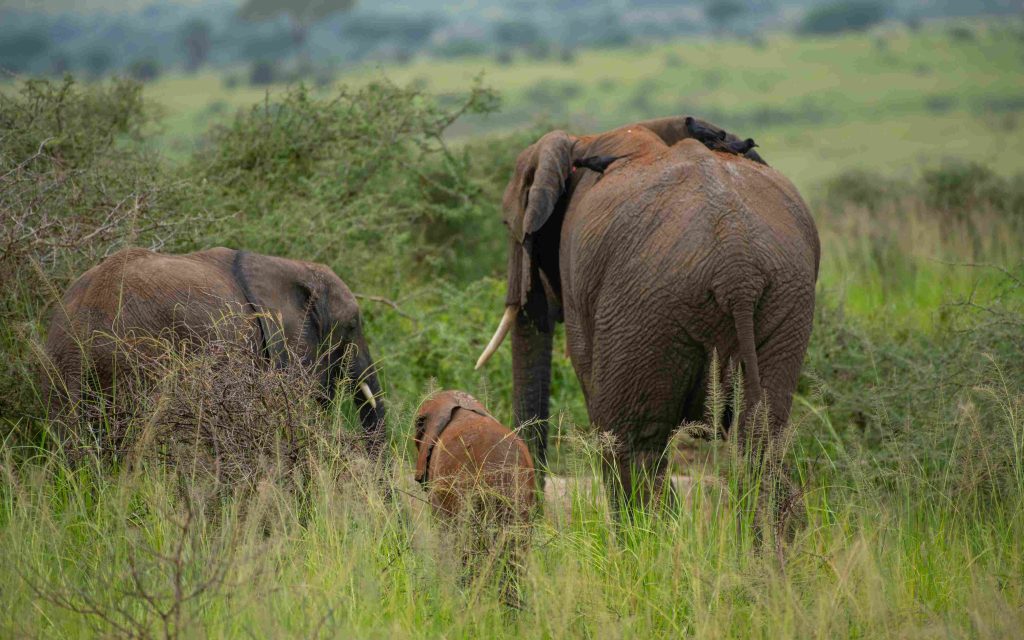
Queen Elizabeth national park is located and found in western Uganda bordered by districts of Kasese, Kamwenge, Rukungiri and Bushenyi. The size of the park is 1,978 km2 ranking it the second largest in Uganda. The park was founded in 1952 as Kazinga National Park and renamed two years later to commemorate a visit by Queen Elizabeth II of England. The park is home to over 95 mammal species and over 600 bird species. Queen Elizabeth National Park is understandably Uganda’s most popular tourist destination. The park’s diverse ecosystems, which include sprawling savanna, shady, humid forests, sparkling lakes, and fertile wetlands, make it the ideal habitat for a classic big game, ten primate species including chimpanzees, and over 600 species of birds. Set against the backdrop of the jagged Rwenzori Mountains, the park’s magnificent vistas include dozens of enormous craters carved dramatically into rolling green hills, panoramic views of the Kazinga Channel with its banks lined with hippos, buffalo, and elephants, and the endless Ishasha plains, whose fig trees hide lions ready to pounce on herds of unsuspecting Uganda Kob. Most of Queen Elizabeth comprises open grassland and savannah which tends to be moist and woody in the west than the eastern part, Thorny Acacia dominates this savannah habitant with the high concentration of candelabra shrub a cactus that grows along the kazinga channel and on the kasenyi plains. Queen Elizabeth supports at least 95 species of mammals, it boasts of 20 carnivores like the Lion, Leopards, side stripped jackal and spotted hyena among others.
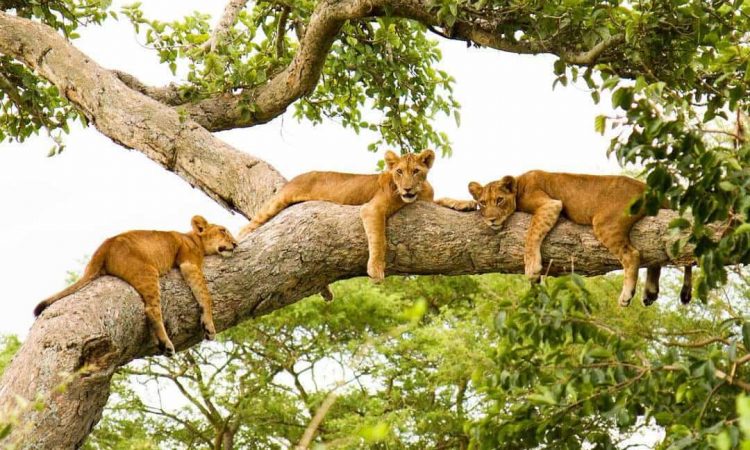
Kidepo is Uganda’s most isolated national park covering 1, 442 km2 of land, but the few who make the long journey north through the wild frontier region of Karamoja would agree that it is also the most magnificent, for Kidepo ranks among Africa’s finest wildernesses. From Apoka, in the heart of the park, a savannah landscape extends far beyond the gazetted area, towards horizons outlined by distant mountain ranges. Kidepo Valley National Park lies in the rugged, semi arid valleys between Uganda’s borders with South Sudan in the north west and only 5km from the eastern border of Kenya, some 700km from Kampala. Gazetted as a national park in 1962, it has a profusion of big game and hosts over 77 mammal species. The park contains two rivers – Kidepo and Narus – which disappear in the dry season, leaving just pools for the wildlife. The local communities around the park include pastoral Karamojong people, similar to the Maasai of Kenya, and the IK, a hunter-gatherer tribe whose survival is threatened. The bird checklist of over 476 species with the common Ostrich, secretary bird, northern carmine bee eater, little green bee eater, Abyssinian scimitar bill and many more colorful and visible species. Kidepo’s elephant population has surged from around 200 in the mid 1990’s to between 650 and 1000 today. The African Buffalo population is now estimated at 10,000-15,000. The Rothschild Giraffe is very notable, breeding more than 50 individuals from the bottleneck of the mid 1990’s population of three and supplemented several from translocation.
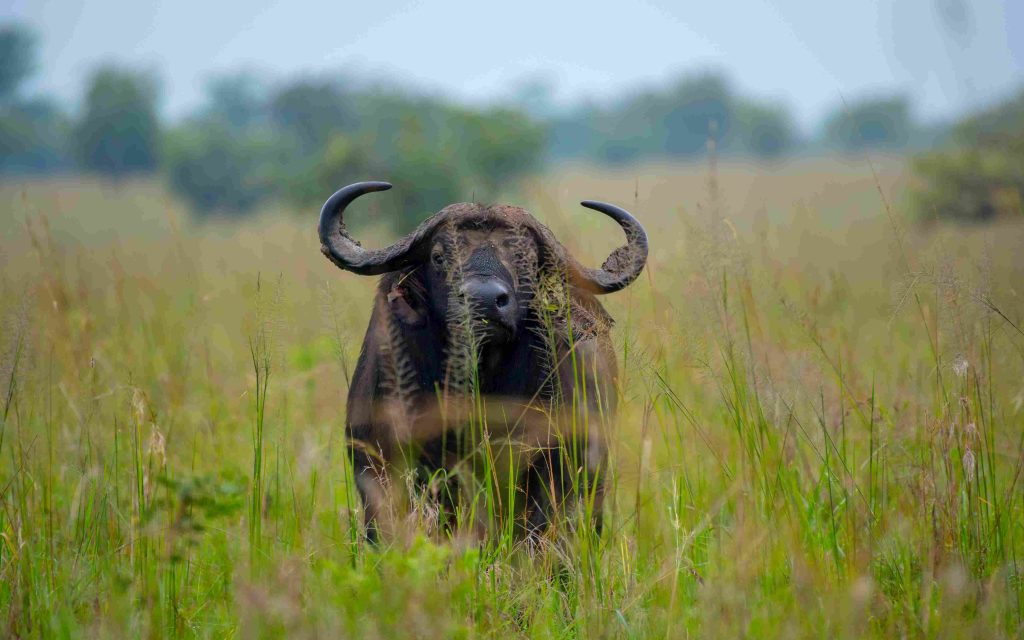
Lake Mburo National Park is the closest of all Uganda’s national parks to the capital city; located between Kampala and Mbarara City. The park is mainly accessed by road over a journey of approximately 228 kilometres. The park further covers total land area of 370 km2. Lake Mburo National Park is a compact gem, located conveniently close to the highway that connects Kampala to the parks of western Uganda. It is the smallest of Uganda’s savannah national parks and it’s a home to 350 bird species as well as zebras, impalas, elands, buffalos, oribi, Defassa waterbuck, leopard, hippo, hyena, Topi and reedbuck. Lake Mburo is notably blessed with over 315 bird species and probably the best place to view acacia-associated birds, Rwonyo is a good zone to see the mosque swallow, black bellied bustard, bare-faced-go away bird and Ruppell’s starling. A handful of birds is recorded essentially the southern ground hornbill and black throated barbet. Together with 13 other lakes in the area, Lake Mburo forms part of a 50km-long wetland system linked by a swamp. Five of these lakes lie within the park’s borders. Once covered by open savanna, this supports the healthy population of Buffalos, Warthog, bushpig and hippopotamus. Lake Mburo National Park now contains much woodland as there are no elephants to tame the vegetation. In the western part of the park, the savanna is interspersed with rocky ridges and forested gorges while patches of papyrus swamp and narrow bands of lush riparian woodland line many lakes.
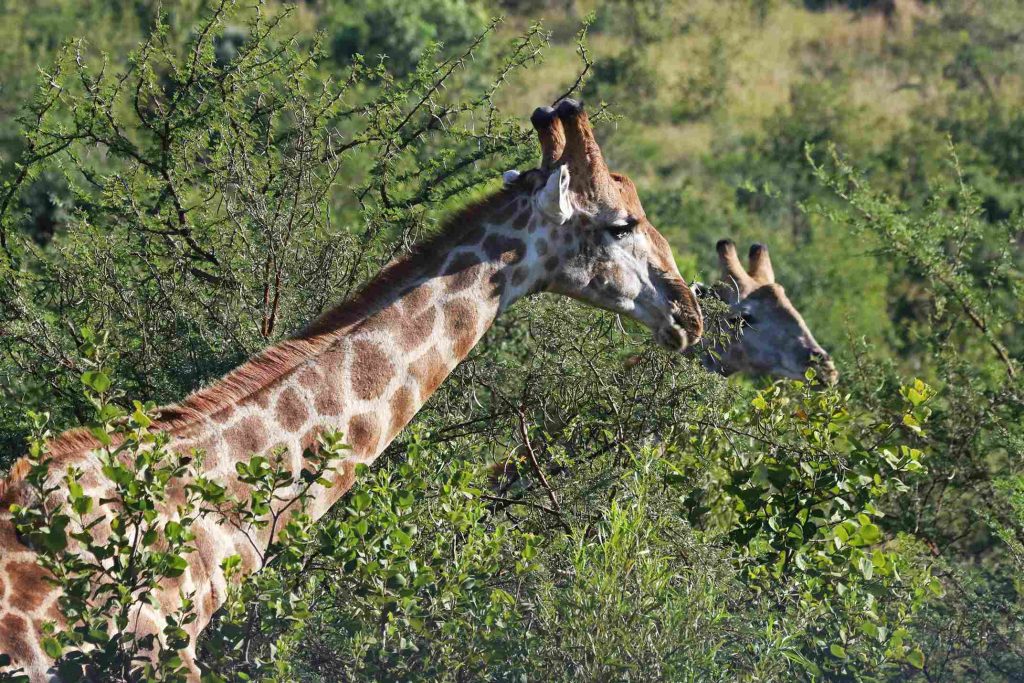
The park is located in the western Uganda region in Bundibugyo district on the Uganda’s border with DR Congo covering a total land area of 220 km2. Semuliki Forest Reserve was created in 1932 and upgraded to national park status in 1993. Semuliki National Park sprawls across the floor of the Semuliki Valley on the remote, western side of the Rwenzori. The Park is dominated by the easternmost extension of the great Ituri Forest of the Congo Basin. This is one of Africa’s most ancient and bio-diverse forests; one of the few to survive the last ice age, 12-18,000 years ago. It is the only tract of true lowland tropical forest in East Africa, hosting 441 recorded bird species and 53 mammals. Four distinct ethnic groups live near the park – Bwamba farmers live along the base of the Rwenzori while the Bakonjo cultivate the mountain slopes. Batuku cattle keepers inhabit the open plains and Batwa, pygmies, traditionally hunter gathers, live on the edge of the forest. This biologically diverse region also provides shelter to a further 120 mammals, including several primate species such as baboons and chimpanzees, as well as elephants and antelopes. Getting to semuliki from Kampala to Fort Portal: Kampala-Fort Portal via Mubende is about 180 Km. (about 4-5 hrs drive) while Kampala -Fort Portal via Masaka, Mbarara, Kasese is about 465 Km (7-8 hrs).

Bwindi Impenetrable National Park lies in southwestern Uganda on the edge of the Rift Valley. The park is located in Kisoro district covering 321 km2 on surface. Its mist-covered hillsides are blanketed by one of Uganda’s oldest and most biologically diverse rain forests, which dates back over 25,000 years and contains almost 400 species of plants. More famously, this “impenetrable forest” also protects an estimated 459 mountain gorillas – roughly half of the world’s population, including several habituated groups, which can be tracked. The Mubare gorilla group was the first to become available for tourism in Uganda in April 1993. Nine groups are now habituated for tourism, and one group for research. This biologically diverse region also provides shelter to a further 120 mammals, including several primate species such as baboons and chimpanzees, as well as elephants and antelopes. There are around 350 species of birds hosted in this forest, including 23 Albertine Rift endemics. Bwindi is a home to at least 200 butterfly species including the eight Albertine rift endemics. Also, a home to many reptiles.
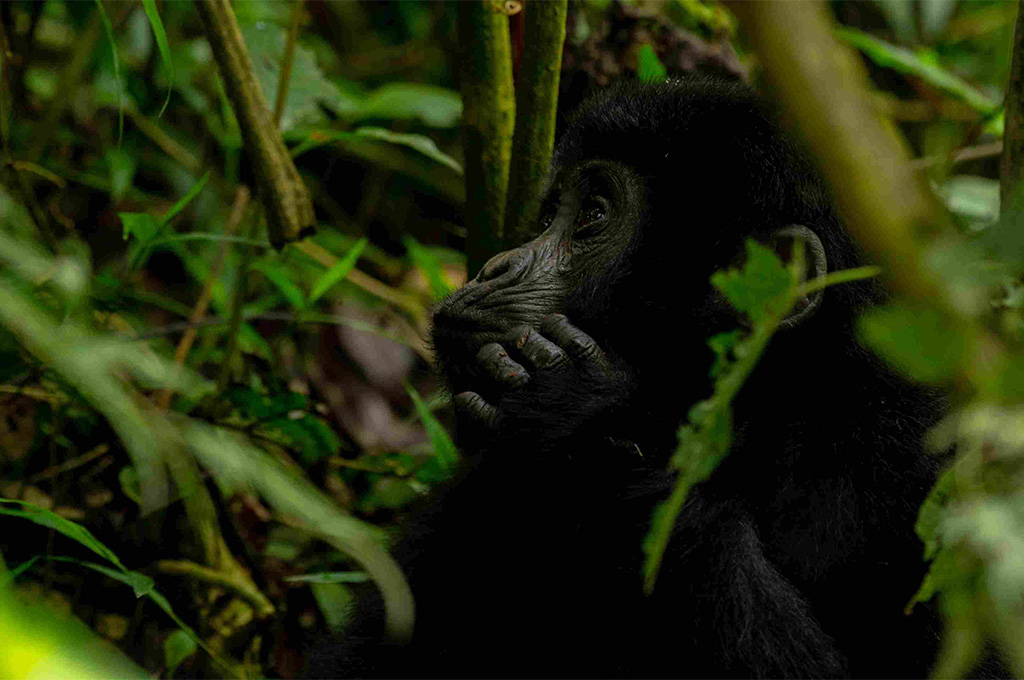
Mgahinga Gorilla national park is located in western Uganda in Kisoro district covering an area of 33.7 km2 making it the smallest national park in Uganda. The park takes its name from “Gahinga” – the local word for the piles of volcanic stones cleared from farmland at the foot of the volcanoes. The British administration declared the area a game sanctuary in 1930; it was gazetted as a National Park in 1991. Mgahinga has one habituated transboundary gorilla group. As its name suggests, it was created to protect the rare mountain gorillas that inhabit its dense forests, and it is also an important habitat for the endangered golden monkey. As well as being important for wildlife, the park also has a huge cultural significance, in particular for the indigenous Batwa pygmies. This tribe of hunter-gatherers was the forest’s “first people”, and their ancient knowledge of its secrets remains unrivaled. Mgahinga boasts of over 76 mammals which include elephants, giant forest hog, bush pigs, bush back. Buffalos, leopards, A bird checklist of over 180 species including the 14 endemic Albertine rift notably the Kivu ground thrush and turaco. Mgahinga’s most striking features are its three conical, extinct volcanoes, part of the spectacular Virunga Range that lies along the border region of Uganda, Congo, and Rwanda. Mgahinga forms part of the much larger Virunga Conservation Area which includes adjacent parks in these countries. The volcanoes’ slopes contain various ecosystems and are biologically diverse, and their peaks provide a striking backdrop to this gorgeous scenery.

The park was gazetted in 1991 and was recognized as a World Heritage site in 1994 and a Ramsar site in 2008. The Rwenzoris – the fabled Mountains of the Moon – lie in western Uganda along the Uganda-Congo border in Bundibugyo district occupying 996 km2 of land. The equatorial snow peaks include the third highest point in Africa, while the lower slopes are blanketed in moorland, bamboo, and rich, moist montane forest. Huge tree heathers and colorful mosses are draped across the mountainside with giant lobelias and “everlasting flowers”, creating an enchanting, fairy-tale scene. The Rwenzori is not volcanic like East Africa’s other major mountains but is a block of rock up-faulted through the floor of the Western Rift Valley. The Rwenzoris were christened the “Mountains of the Moon” by the Alexandrine geographer Ptolemy in AD 150. The explorer Henry Stanley placed the Rwenzori on the map on 24th May 1888. He labeled it ‘Ruwenzori’, a local name which he recorded as meaning “Rain-Maker” or “Cloud-King.” The oldest recorded person to reach Margherita Peak was Ms. Beryl Park aged 78 in 2010. Rwenzori Mountains National Park protects the highest parts of the 120km-long and 65km-wide Rwenzori Mountain range. The national park hosts 70 mammals and 217 bird species including 19 Albertine Rift endemics, as well as some of the world’s rarest vegetation. The Rwenzoris are a world-class hiking and mountaineering destination. A nine- to twelve-day trek will get skilled climbers to the summit of Margherita – the highest peak – though shorter, non-technical treks are possible to scale the surrounding peaks. The highest point: 5,109m above sea level on Mt Stanley’s Margherita Peak. The border with DR Congo bisects Mt. Stanley.
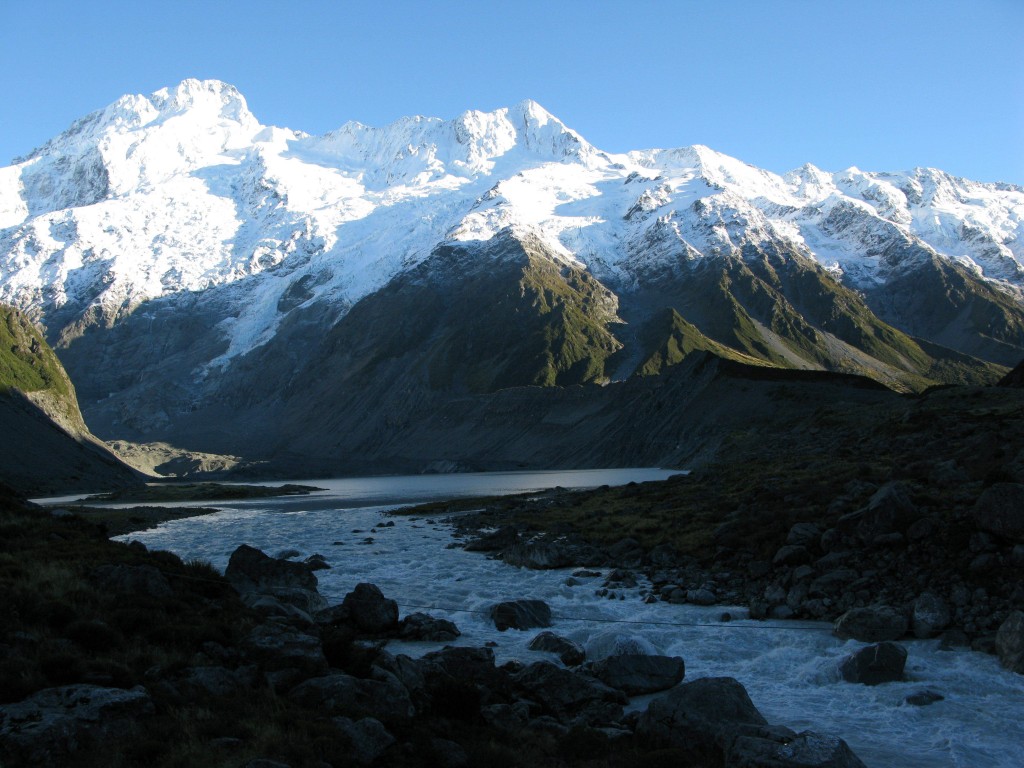
Mt. Elgon has the largest volcanic base in the world. Located on the Uganda-Kenya border it is also the oldest and largest solitary, volcanic mountain in East Africa. The park is covering 1,121 km2 of land. Its vast form, 80km in diameter, rises more than 3,000m above the surrounding plains. The mountain’s cool heights offer respite from the hot plains below, with the higher altitudes providing a refuge for flora and fauna. Mount Elgon National Park is home to over 300 species of birds, including the endangered Lammergeyer. The higher slopes are protected by national parks in Uganda and Kenya, creating an extensive trans-boundary conservation area which has been declared a UNESCO Man & Biosphere Reserve. This extinct volcano is one of Uganda’s oldest physical features, first erupting around 24 million years ago. Mt Elgon was once Africa’s highest mountain, far exceeding Kilimanjaro’s current 5,895m. Millennia of erosion have reduced its height to 4,321m, relegating it to the 4th highest peak in East Africa and 8th on the continent. Mt Elgon is home to two tribes, the Bagisu and the Sabiny, with the marginalized Ndorobos forced to dwell deep within the forest of Benet. The Bagisu, also known as the BaMasaba, consider Mount Elgon to be the embodiment of their founding father Masaba and refer to the mountain by this name. A climb on Mt. Elgon’s deserted moorlands unveils a magnificent and uncluttered wilderness without the summit-oriented approach common to many mountains: the ultimate goal on reaching the top of Mt. Elgon is not the final ascent to the 4321m Wagagai Peak, but the descent into the vast 40km² caldera. The mammalian fauna of Mount Elgon is poorly known. The most common specie’s, or at least the most visible to hikers, are blue monkeys and black and white Columbus. A small number of Elephants are residents of forests and several montane moorland endemics.
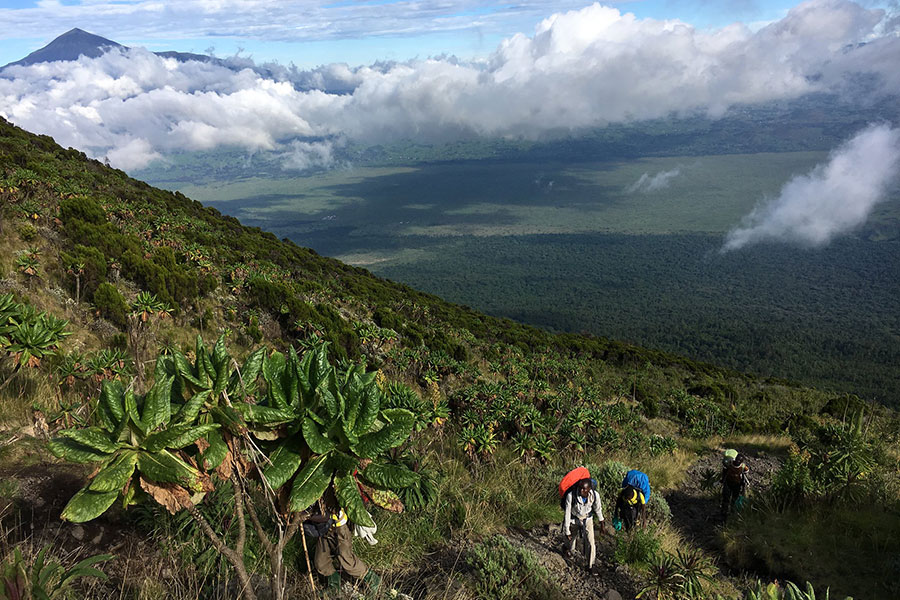
Kibale forest national park is located in western Uganda in Kabarole district covering 321 km2 of land. Kibale’s premier attraction is the Kanyanchu Primate Walk, offering the opportunity to seek out thirteen different primate species, with a variety of diurnal monkeys frequently observed. However, the true highlights of this walk are the chimpanzees. Since 1993, the Kanyanchu chimpanzees have been closely monitored, significantly increasing the likelihood of sightings. Guided walks are available at 8:00 AM and 2:00 PM, typically lasting around three hours, subject to various conditions. This consistently popular primate walk allows visitors to observe chimpanzees in their natural habitat. The chimpanzee groups in Kanyanchu are well accustomed to human presence, with some having been observed for over 25 years, ensuring a sighting probability of over 90%. Kibale is a biologically rich region that also hosts over 120 other mammal species, including baboons, elephants, and antelopes. The forest is home to approximately 370 bird species, including 23 Albertine Rift endemics such as Nahan’s francolin, Cassin’s spine tail, blue-headed bee-eater, and lowland masked apalis. The most notable among Kibale’s primate population is the surge of about 1,500 chimpanzees, divided into at least a dozen different communities, with four habituated to human presence. The Kanyantale community has been tracked by tourists daily since 1993.
